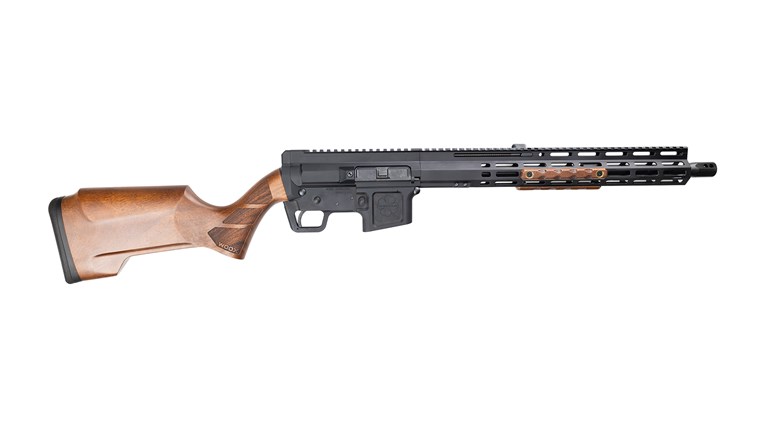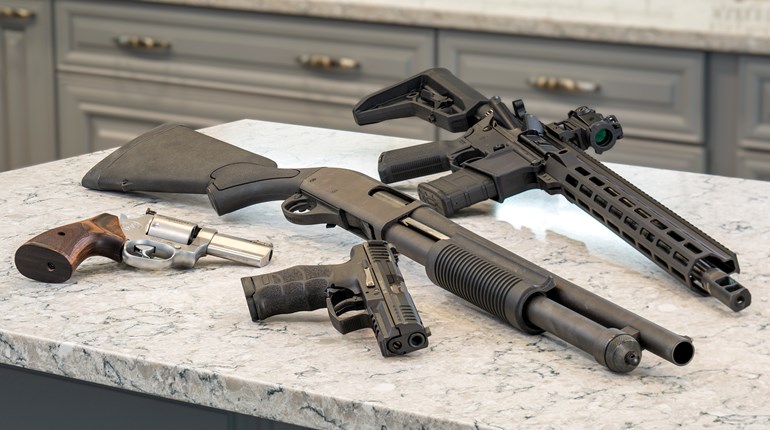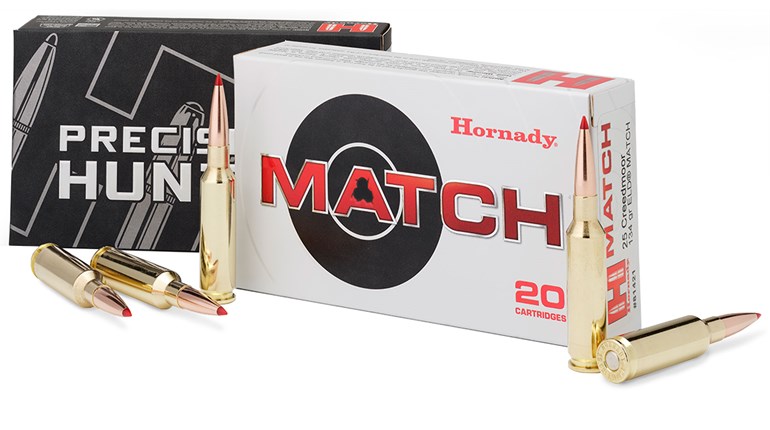
 Pickup trucks and multi-tools are often asked to perform tasks for which they were not originally designed. Our workhorse firearms also fall into this utility category, such as when a sound suppressor is added to a semi-automatic rifle. The negative results of hanging these short sections of baffle-filled pipe on the ends of our guns include heavy fouling, rapid heating, increased back pressure and malfunctions. As sound suppressors become more commonplace amongst the shooter's bag of tricks, more people are learning that just because something attaches easily to a gun does not mean the two will play well together.
Pickup trucks and multi-tools are often asked to perform tasks for which they were not originally designed. Our workhorse firearms also fall into this utility category, such as when a sound suppressor is added to a semi-automatic rifle. The negative results of hanging these short sections of baffle-filled pipe on the ends of our guns include heavy fouling, rapid heating, increased back pressure and malfunctions. As sound suppressors become more commonplace amongst the shooter's bag of tricks, more people are learning that just because something attaches easily to a gun does not mean the two will play well together.
A fair bit of trial and error is often required when tuning a problematic semi-auto rifle's action for full-time suppressor use. The simplest tweaks involve changing the system's timing by adjusting buffer weights or designs, bolt-carrier mass and action-spring rates. These "fixes" may only be temporary, though, and like bandages, they simply treat a wound's most obvious symptoms. The other end of the spectrum requires complete barrel replacement, where a gas port can be positioned and resized according to specific ammunition and pressure needs. The latter impractical and expensive solution is one we avoid at all costs. On the other hand, adjustable gas blocks provide a good middle ground solution that treats the problem close to its point of origin. Aftermarket manually adjustable gas blocks are a good solution for guns that need a little help when suppressed, but if easy and consistent adjustments are desired, good options are extremely limited.
Most aftermarket adjustable gas blocks rely on setscrews for gas-flow regulation, requiring small wrenches to adjust. These screws tend to work out of adjustment over time. I had one such screw back out far enough to be lost during a field shoot, disabling the rifle until I (luckily) found something that fit the threads. The "Govnah" gas block by MicroMOA suffers no such design limitations. The Govnah is a 416 stainless steel, nitrided, low-profile gas block currently available for barrels with an outer diameter of .750 inch at the journal, or gas port section. The Govnah uses a laterally-sliding regulator plate with multiple gas-port sizes as the mechanism for changing the rate at which gas moves into the gas tube. The adjustment is tool-free—you can change port settings with a finger until it gets too hot for bare skin or if you have a fore-end that extends beyond the gas block. In those cases, any small object, including the tip of a cartridge, can be used to change the port size by pushing the regulator plate in either direction. Machined-in tracks keep the regulator plate aligned inside the gas block, and teeth along the front edge lock the plate in place against a hardened detente pin. A captive design prevents the user from unintentionally pushing the regulator plate out the sides of the gas block.

MicroMOA's regulator plates come with either two or three port positions. Pre-drilled holes currently run .046 inch in diameter, which is suggested for suppressed 5.56 NATO shooting. The second (or third) position comes with a starter hole that can be left as-is to shut off gas flow or drilled to provide an additional port size. A little trial and error will help you find the diameters that allow your rifle to run reliably under different conditions. For example, my .308 Win. AR has ports for suppressed, unsuppressed and hand-cycled firing. I could just as easily set up the third position to be wide open for adverse conditions. Anyone that has the tools and ability to replace a gas block can install a Govnah on their gun. A simple hand drill can be used to adjust port sizes on the regulator plates. But if adjustments to the actual barrel's gas port size or other tuning steps are also required, I suggest leaving that work to an AR-competent gunsmith.
MicroMOA's instructions explain the regulator plate's removal and installation process clearly, and once you get the hang of it, removing one plate and installing another only takes a few seconds. That means you can either carry a spare plate that mirrors your port settings or make one with different ports for changes to conditions and ammunition, such as subsonic or light recoiling loads that typically need larger gas ports to permit semi-auto function.
Sample videos are available at MicroMOA's website showing the Govnah in action on numerous full-automatic and suppressed rifles and carbines. I have installed and tested several Govnah's and so far I am very happy with the setup. I have not done any long term durability testing but I am keeping an accurate round count of my own rifle with the block in place and so far I have had zero problems through several hundred rounds of use. The plate is clean and moves freely when adjusted, but remains firmly in the desired position until I move it. One word of caution though: A small amount of gas escapes the slot that the regulator plate slides into. Much like a revolver's cylinder-to-barrel junction, you should avoid placing your hand directly over this portion of the gas block. I placed my support hand in that spot on one rifle's free-float tube—which extended beyond the gas block—without any trouble, but small fore-end diameters could bring your hand too close to the escaping gasses so be careful.
The Govnah does not require a custom gas tube or any other specialized components. Port size options are endless and a .625-inch-diameter version will soon be available for light barrels. The gas block retails for $149.99, and compared to other aftermarket (and some OEM) options, it represents a good value.





































